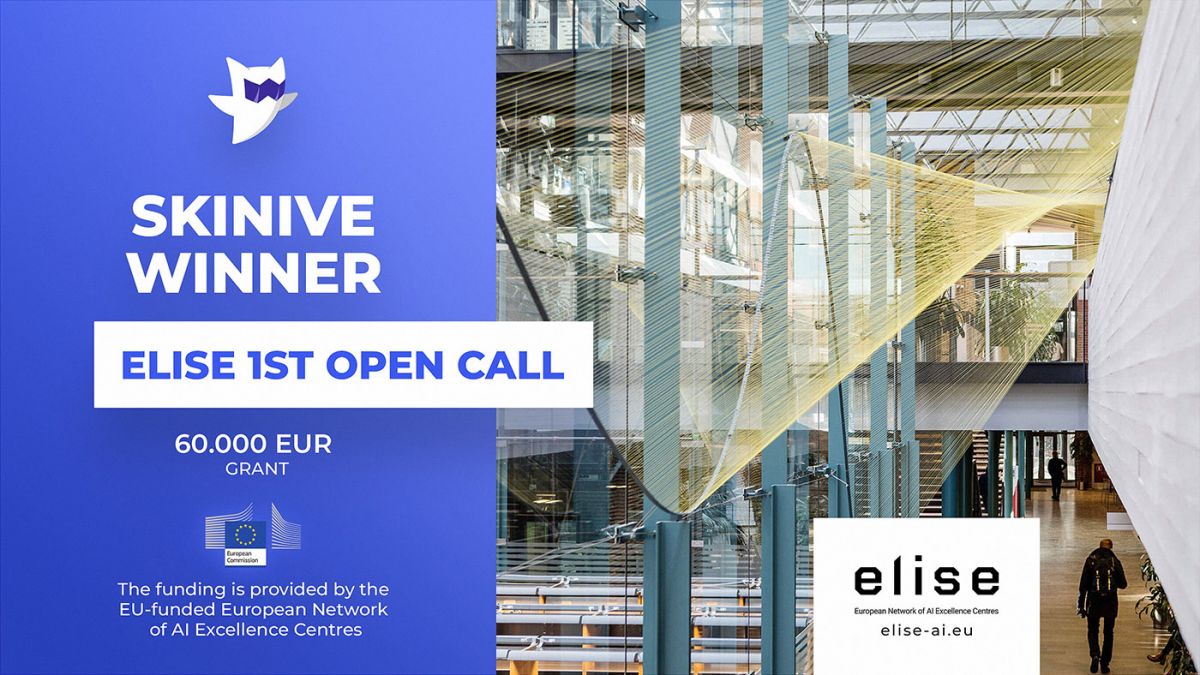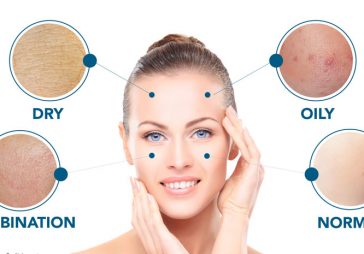Teledermatology, often referred to as telederm, revolutionizes dermatological care by utilizing telecommunications technology for remote medical services. Through secure GDPR and HIPAA-compliant telemedicine platforms, patients can now engage in consultations without physical presence, benefiting from convenient access to skin healthcare from the comfort of their homes.
This innovative approach involves patients sharing details about their chief complaints and symptoms, along with digital images and live or stored videos, enabling dermatologists and healthcare providers to thoroughly evaluate, diagnose, and offer treatment recommendations remotely.
As one of the most prevalent telemedicine applications, teledermatology capitalizes on the visual nature of skin conditions. By harnessing advanced telehealth technologies, dermatologists can effectively extend their services to a broader range of patients, ensuring cost-effective and efficient care delivery.
Types of teledermatology
Teledermatology is usually delivered via store-and-forward communications, live video conferencing4 or a hybrid model (a mix between both).
- Synchronous (live video conferencing)
- Asynchronous (store-and-forward)
- Hybrid teledermatology combines elements of real-time and store-and-forward teledermatology
1. Synchronous teledermatology
Synchronous teledermatology, also known as live video conferencing, facilitates real-time interaction between patients and healthcare providers using telecommunications technology, replicating the experience of an in-person visit.
Advantages of Synchronous Teledermatology
- Convenience: Synchronous teledermatology eliminates the need for patients to travel to healthcare facilities for appointments, offering unparalleled convenience. Patients can engage in consultations from the comfort of their homes, particularly benefiting those with mobility constraints, transportation limitations, or busy schedules.
- Enhanced Access in Rural Areas: Overcoming geographical barriers, synchronous teledermatology extends healthcare access to individuals residing in remote areas. Patients who previously faced challenges traveling long distances can now easily connect with healthcare providers remotely.
- Real-time Interaction: Direct face-to-face communication with healthcare providers through live video conferencing replicates the in-person experience. This immediate interaction empowers patients to discuss concerns, describe symptoms, and seek clarification, leading to a deeper comprehension of their condition and more personalized care.
- Extended Provider Interaction: Unlike store-and-forward telemedicine, synchronous teledermatology allows patients to engage in more comprehensive discussions with healthcare providers. Patients have the opportunity to provide detailed information about their skin issues and ask follow-up questions.
Disadvantages of Synchronous Teledermatology
- Inefficient Provider Time Utilization: Synchronous teledermatology can occasionally be less time-efficient than physical visits. Technical glitches, connectivity interruptions, or video/audio transmission delays can disrupt consultations, consuming valuable time.
- Limited Time Savings: For providers, synchronous teledermatology may not significantly reduce consultation time compared to in-person visits. While travel is eliminated, the overall consultation duration might remain similar, particularly when technical troubleshooting or in-depth conversations are necessary.
- Dependence on Internet Quality: Effective synchronous telehealth hinges on stable, high-speed internet connectivity and quality video/audio capabilities. Any disruptions in internet connection or poor video quality can hinder consultations and impact visual assessments.
- Risk of Patient Delays: Just like physical appointments, even slight delays from patients during live video conferencing can create a backlog, especially with back-to-back appointments. Such delays can have a ripple effect, affecting subsequent appointments and causing frustration for patients and providers alike.
- Potential Patient Embarrassment: Live telemedicine consultations may pose challenges for patients with skin lesions in private or sensitive areas. Patients might feel self-conscious or uncomfortable exposing these areas on camera, potentially hindering open communication and impacting assessment diagnostic accuracy.
In conclusion, while synchronous teledermatology offers numerous benefits, it also presents certain challenges. Despite attempting to replicate in-person consultations, technical issues, time considerations, and potential patient discomfort can impact its efficiency and effectiveness. As with any medical interaction, a balanced approach, clear communication, and a focus on patient needs are essential.
2. Asynchronous teledermatology
Unlocking Delayed Communication in Dermatology
Asynchronous teledermatology, also known as store and forward telehealth in dermatology, facilitates the transmission of patient information to dermatologists for future review. Diverging from the real-time nature of synchronous telehealth, this approach enables a deferred interaction between patients and dermatology experts.
In this mode of telehealth, patients capture high-quality images and/or videos of their skin conditions or lesions using digital cameras or smartphones. Subsequently, they securely transmit these visuals, along with pertinent medical history and symptoms, to dermatology providers.
Several studies have demonstrated that, in certain instances, store and forward teledermatology showcases a remarkable level of accuracy that surpasses even in-person encounters. This might be attributed to the enhanced resolution offered by mobile phone cameras.
Benefits of Asynchronous Teledermatology
In addition to the advantages akin to live video conferencing, store-and-forward teledermatology offers a distinct array of benefits:
- Reduced Waiting Times: Asynchronous teledermatology significantly cuts down waiting times for consultations. Instead of enduring weeks or months for an in-person or live video appointment, patients can submit their cases electronically and receive a dermatologist’s evaluation within a shorter span. This accelerated process ensures timely commencement of necessary treatments or interventions.
- Expedited Treatment for Urgent Cases: Asynchronous teledermatology proves particularly invaluable for urgent cases demanding prompt attention. Dermatologists can swiftly prioritize and evaluate urgent cases, expediting the treatment timeline and potentially averting complications or disease progression. This rapid intervention holds utmost significance in dermatological emergencies like excising a suspicious mole showing observable changes over time.
- Enhanced Case Management: Store and forward teledermatology empowers dermatologists to efficiently manage a greater volume of patient cases. By transcending the constraints of physical appointments and travel time, dermatologists can assess and appraise a larger pool of cases. This scalability translates to heightened efficiency and augmented access to specialized care for an expanded patient base.
- Elevated Patient Satisfaction: Asynchronous teledermatology has proven to enhance patient satisfaction by providing convenient access to expert dermatological insights. It mitigates the vexation tied to prolonged waits for in-person appointments. Patients can secure prompt evaluations and treatment recommendations, culminating in elevated contentment with their healthcare journey.
- Lessened Patient Embarrassment: Store and forward telemedicine potentially alleviates patient embarrassment as they can take numerous photos to conceal private areas. Patients might feel less self-conscious about submitting detailed photographs rather than participating in live videos that expose them directly to the camera.
Disadvantages of Asynchronous Teledermatology
The sole drawback of asynchronous telehealth in dermatology is its lack of real-time engagement, thus excluding the option for immediate follow-up queries and responses. However, with platforms supporting store and forward telehealth, patients can submit written questions to their dermatology providers and receive answers within a couple of days. This aspect effectively negates the disadvantage of real-time absence, ensuring a comprehensive and satisfying telehealth experience.
3. Hybrid teledermatology
Fusing Synchronous and Asynchronous Care
Hybrid teledermatology, also recognized as blended or mixed teledermatology, introduces a care paradigm that seamlessly integrates aspects of both synchronous (live video conferencing) and asynchronous (store-and-forward) teledermatology. The essence of this model is to synergistically harness the strengths of each methodology, culminating in a versatile and holistic dermatological care experience.
Through the implementation of hybrid teledermatology, patients are presented with a unique choice between synchronous and asynchronous consultations, aligning with their preferences or the characteristics of their skin conditions. This innovative approach ushers in tailored and personalized patient encounters, optimizing the perks of both real-time interactions and delayed communication.
Advantages of Hybrid Teledermatology
- Enhanced Patient Satisfaction: The hybrid model has the potential to heighten patient satisfaction by accommodating individual preferences and needs. Patients can select the mode of consultation that resonates with them, contributing to a more comfortable and engaging healthcare journey.
- Improved Access to Care: Hybrid teledermatology opens doors to enhanced access to care. Patients residing in remote areas or those with mobility limitations can benefit from the flexibility of either immediate interactions or asynchronous consultations, expanding the reach of dermatological services.
- Reduced Waiting Times: By incorporating both synchronous and asynchronous elements, the hybrid model has the capacity to reduce waiting times for consultations. Patients can swiftly receive care through real-time appointments or opt for a streamlined asynchronous evaluation, mitigating the frustration associated with extended waiting periods.
- Comprehensive Dermatological Services: The hybrid approach ensures a comprehensive spectrum of dermatological services. Patients can gain insights from real-time discussions and capitalize on the thoroughness of asynchronous data sharing, leading to a more holistic understanding of their conditions.
- Guidelines and Protocols: It is imperative to establish clear protocols and guidelines for the judicious application of the hybrid teledermatology model. Crafting criteria for patient selection and determining when to employ synchronous versus asynchronous components is pivotal in extracting maximum efficiency and value from this amalgamated strategy.
In conclusion, hybrid teledermatology represents a remarkable convergence of synchronous and asynchronous care paradigms. By affording patients the liberty to tailor their consultations, this model enriches patient experiences, broadens care accessibility, minimizes wait times, and delivers all-encompassing dermatological services. Careful navigation and adherence to established guidelines are essential to maximize the benefits of this innovative approach.
4. The Role of Artificial Intelligence in Advancing Teledermatology
In the realm of telemedicine, Artificial Intelligence (AI) has emerged as a transformative force, revolutionizing various aspects of teledermatology. This integration of AI holds immense promise in enhancing diagnosis accuracy, streamlining workflows, and optimizing patient care. Here, we delve into the multifaceted benefits AI brings to different realms of teledermatology.
AI in Digital Health: Unveiling the Benefits
- Enhanced Diagnostics: AI-powered algorithms can analyze medical images, such as skin lesions or conditions, with remarkable precision. This capability aids dermatologists in making accurate diagnoses, reducing the potential for errors and ensuring more effective treatment planning.
- Risk Assessment: AI algorithms can assess disease risks based on various parameters. By analyzing patient data and images, these systems provide insightful risk assessments that guide healthcare providers in offering appropriate interventions and guidance.
- Efficient Patient Triage: AI can expedite the triage process by prioritizing cases based on urgency. This mechanism ensures that critical cases receive prompt attention while optimizing resource allocation and patient flow.
- Personalized Treatment Plans: AI-driven insights facilitate the creation of tailored treatment plans. Algorithms can consider patient history, condition specifics, and treatment outcomes to recommend interventions that align with individual needs.
- Data-Driven Decision-Making: AI empowers healthcare professionals with data-driven insights. By analyzing vast datasets, AI identifies patterns, trends, and potential correlations that might not be immediately evident, contributing to informed decision-making.
- Remote Monitoring: AI-based systems enable continuous monitoring of patients’ conditions remotely. This ensures that any changes or developments are promptly detected, allowing for timely interventions.
Introducing Skinive’s AI-Powered Dermatology Platform
Skinive’s innovative AI-powered teledermatology platform comprises two comprehensive apps: the Skinive App for patients and the SkiniveMD App for healthcare professionals.
Skinive App – Empowering Patients:
- Smartphone Mapping: Users can accurately map and document neoplasms using their smartphones, creating a digital record for further assessment.
- Monitoring Changes: The app tracks changes in skin conditions over time, alerting users to any significant developments.
- Instant AI-Powered Risk Assessment: AI algorithms analyze uploaded images to provide users with immediate disease risk assessments, fostering proactive healthcare decisions.
- Teledermatology Consultations: When necessary, users can seamlessly engage in doctor-patient teledermatology consultations, ensuring expert guidance and peace of mind.
Skinive MD App – Empowering Healthcare Professionals:
- Streamlined Patient Assessment: Dermatology professionals can efficiently evaluate patient cases remotely through the app, optimizing their clinical workflow.
- Accurate Diagnoses: AI-driven assistance aids dermatologists in making precise diagnoses, complementing their expertise and enhancing patient care.
- Data-Driven Insights: The app offers data-driven insights, facilitating thorough patient evaluations and aiding in treatment planning.
- Collaborative Care: Teledermatology consultations enable seamless communication between dermatologists and patients, fostering a collaborative approach to healthcare.
Benefits for Physicians, Patients, and the Healthcare System
- Physicians: Dermatologists benefit from AI’s assistance, leading to improved diagnostic accuracy, streamlined workflows, and more informed decision-making. Teledermatology consultations enhance their ability to provide timely guidance, extending their reach and impact.
- Patients: Patients gain swift access to expert dermatological insights and risk assessments through the Skinive App. Remote monitoring and teledermatology consultations ensure convenient and proactive healthcare management.
- Healthcare System: Skinive’s AI platform optimizes resource utilization by efficiently triaging cases. Swift interventions based on AI insights reduce the burden on healthcare facilities, ensuring that critical cases receive immediate attention.
Elevating Teledermatology with Skinive Cloud
In the landscape of teledermatology, Skinive is at the forefront of innovation, not only with its user-centric apps but also with its groundbreaking Skinive Cloud – AI Dermatology API service. This service extends the reach of Skinive’s AI technology by seamlessly integrating it into third-party telemedicine services, Electronic Medical Record (EMR) / Electronic Health Record (EHR) systems, as well as beauty and health applications. Let’s explore the transformative benefits that Skinive Cloud brings to various stakeholders.
For Third-Party Telemedicine Services:
- Enhanced Diagnostic Accuracy: Integrating Skinive’s AI technology enriches telemedicine platforms with advanced diagnostic capabilities. Physicians can leverage AI-powered insights for more accurate assessments, leading to improved patient care and treatment decisions.
- Efficient Triage: Skinive Cloud’s AI-enhanced triage streamlines the process of prioritizing patient cases. This ensures that urgent cases receive prompt attention, optimizing resource allocation and healthcare delivery.
- Comprehensive Patient Data: By incorporating Skinive’s AI, telemedicine services gain access to comprehensive patient data and insights. This holistic view facilitates well-informed consultations and personalized treatment planning.
For EMR / EHR Systems:
- Seamless Integration: Skinive Cloud seamlessly integrates with EMR / EHR systems, enhancing their capabilities with AI-driven dermatological insights. Physicians can access critical dermatology information within the same interface, streamlining workflows.
- Data-Driven Decision-Making: The integration empowers healthcare providers with AI-driven data insights. These insights guide treatment decisions, leading to more informed and effective interventions.
- Streamlined Collaboration: Skinive Cloud facilitates collaborative care by enabling dermatologists to share AI-powered assessments directly within the EMR / EHR system. This ensures all stakeholders are on the same page for comprehensive patient management.
For Beauty and Health Applications:
- Personalized User Experience: Integrating Skinive’s AI technology into beauty and health apps offers users personalized insights into their skin health. This enhances user engagement and loyalty.
- Proactive Skin Care: AI-powered risk assessments and recommendations empower users to take proactive measures for their skin health, fostering a preventative approach to skincare.
- Enhanced Features: Beauty and health applications can offer advanced features by integrating AI-driven skin analysis. This can attract new users and differentiate the app in a competitive market.
The introduction of Skinive Cloud brings forth a new era in teledermatology, amplifying the capabilities of various stakeholders. By seamlessly integrating AI technology, Skinive Cloud enhances diagnostic accuracy, optimizes workflows, and empowers patients to take charge of their skin health. Whether through telemedicine services, EMR / EHR systems, or beauty and health applications, Skinive Cloud is reshaping the landscape of dermatological care.
Contact Us to Unlock the Potential of Skinive’s AI Solutions
The Skinive team is excited to share more about the transformative capabilities of our AI teledermatology platform. Contact us today to schedule a call or send us a message through our Contact Us page. Discover how Skinive’s innovative approach is shaping the future of dermatological care.
Contact us to learn more about Skinive’s capabilities and how it’s reshaping teledermatology. Schedule a call or send us a message through our Contact Us page.










